Trees standing alone attract birds on their own merits. The major attractions are the nectar provided by the flowers LINK and the fruits. We have seen that figs draw the most birds LINK. And that some trees are better at attracting birds than others LINK. In all cases it is mostly during the flowering and fruiting periods that there would be an abundance of birds. And most trees flower and fruit once, twice or even three times a year. During the periods in between, birds come only for the shelter the trees afford, the nesting materials available, for possible nesting sites and food in the form of insects.
Encouraging climbers and scramblers around the trees will provide cover to the trees’ bare trunks and branches LINK. And the presence of the right species of climbers/scramblers will ensure more food for birds around the trees, especially at times when the trees are not flowering and fruiting. In addition, the insects these plants attract provide additional food for the birds.
Encouraging epiphyes on the bare branches of the trees also increases insect biodiversity, not to mention extra cover and nesting materials and sites. Incidentally, epiphytes are plants that grow on the branches of other plants. They only use the host as a support and do no harm to the latter. A number of epiphytic ferns find their way naturally to the tree branches and these should not be removed. These ferns can also be introduced by attaching them with raffia to the branches. Similarly, epiphytic orchids should also be encouraged.
1. White-stemmed button vine (Cissus hastate) is an herbaceous climber whose black fruits develop along the soft climbing stems. Fruiting is profuse, attracting fruit-eating birds like oriole, flowerpeckers, bulbuls and mynas LINK.
2. Honeysuckle (Lonicers japonice) can be allowed to scramble up trees (below left). Their fragrant flowers attract insects as well as nectar-seeking birds.
3. Allowing a bougainvillea bush to intertwine with the branches of a tree will give it a pleasing effect when the former is in flower (above centre). Birds like sunbirds, flowerpeckers and white-eyes often seek refuge among the branches.
4. Passion fruit (Passiflora laurifolia) is an extensive climber with attractive large flowers and egg-shaped orange fruits (above right). The plant definitely attract birds but detailed records are lacking.
5. Rangoon Creeper (Quisqualis indica) is a vigorous climber that produces bunches of fragrant flowers a few times a year (below left). This is a popular ornamental plant native of the Old tropics, now an escapee in some countries. There are no records of birds feeding on the flowers or fruits but birds do visit to forage for insects LINK.
6. Dutchman’s pipe or Indian birthwort (Aristolochis tagala) is a creeper that was introduced into Singapore from nearby Malaysia (above centre). It is now naturalised. This is the food plant of the Common Birdwing (Troides helena cerberus), the only CITES-protected butterfly species in Singapore (Khew, 2010). This is also the food plant of the Common Rose (Pachliopta aristolochiae asteris) (Corbet & Pendlebury, 1978). So there should be caterpillars aplenty.
7. Pigeon orchids (Dendrobium cruminetum) growing on the branches of trees removes the monotony of bare branches with their greenery and fragrant white flowers (above right). The orchid also provides biodiversity.
8. Dragon’s tail (Raphidophora korthalsii) can be made to climb along stem of trees/palms. Their succulent fruits attract birds like orioles LINK.
9. Money plant (Epipremnum aureum) similarly can be made to climb up the trunk of trees and palms. Although it is not known to flower locally, its presence can attract insects.
10. Stag’s horn fern (Platycerium coronarium) needs to be introduced to the tree branches as their growth takes years from spores if it is hoped to have it by natural means (above left).
11. Bird’s nest fern (Asplenium nidus) will easily establish on branches of older trees but it is simpler to just place one or a few on the branches (above centre).
12. Dragon scale fern (Pyrrosia piloselloides) is a creeping fern that can cover the bare trunk and branches easily if introduced (above right).
YC Wee
Singapore
November 2011
References:
1. Corbet, A.S. & H.M. Pendlebury (1978). The butterflies of the Malay Peninsula. Malayan Nature Society, Kuala Lumpur. 3rd. ed.
2. Holttum, R. E. & I. Enoch (1991). Gardening in the tropics. Times Editions, Singapore. 384pp.
3. Khew Sin Khoon, 2010. A field guide to the butterflies of Singapore. Ink On Paper Communications, Singapore. 342 pp.
4. Wee, Y. C. (2005). Ferns of the tropics. Times Editions-Marshall Cavendish, Singapore. 2nd ed. 190 pp.


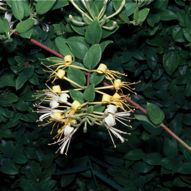
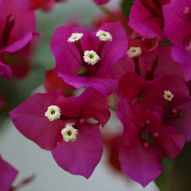

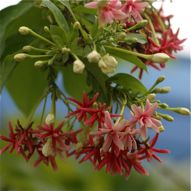
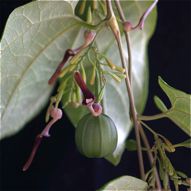


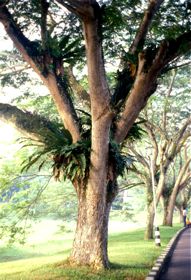
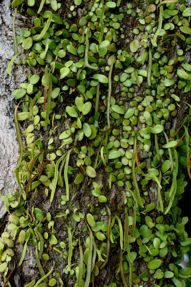







3 Responses
This series of articles is brilliant, YC. It is a valuable reference for Singaporeans lucky enough to have gardens, and for anybody in the tropics and sub-tropics who want to attract birds. I will be using some of the hints here for our garden on Koh Samui
Thanks Howard.